Solar Panel System Installation Costs in Spain
Thinking of harnessing the power of the Spanish sun and installing solar panels? It’s a brilliant decision! Solar panels not only help you save money on your electricity bills and reduce your reliance on the grid, but also contribute to a cleaner, greener future for Spain. Solar Panel System Installation Costs in Spain. But a big question often pops up: how much does it cost to install a solar panel system?
This comprehensive guide dives into the world of solar panel system installation costs in Spain. We’ll explore the key factors that affect the price, provide cost estimates for different scenarios, and equip you with the knowledge to make informed choices for your solar journey.
Unveiling the Cost Factors: A Breakdown
The final cost of your solar panel system in Spain is influenced by several key factors. Here’s a breakdown of the major players:
System Size (kWp): This refers to the Kilowatt-peak (kWp) rating, which indicates the maximum amount of electricity your system can generate under ideal conditions. Bigger systems with more panels will naturally cost more upfront.
Roof Size and Type: The available space on your roof and its type (tiled, metal sheet, etc.) determine how many panels can be installed and the complexity of the installation process.
Panel Efficiency: Solar panels with higher efficiency convert sunlight into electricity more effectively. This impacts the number of panels needed for your desired output. While high-efficiency panels might have a slightly higher upfront cost, they often generate more power in the long run, potentially leading to faster payback periods.
Inverter Type: The inverter converts the Direct Current (DC) electricity produced by the panels into Alternating Current (AC) electricity usable by your home appliances. String inverters are common for smaller systems, while larger installations might benefit from more sophisticated inverter types, affecting the cost.
Government Incentives: The Spanish government offers various programs and grants to encourage solar adoption. These incentives can significantly reduce the upfront cost of your system.
Installation Company: Different companies may have varying labor costs and equipment markups, impacting the overall price. It’s crucial to compare quotes from several reputable installers.
The Price Range: How Much Does it Cost?
Now that you understand the cost influencers, let’s explore the range you can expect for a solar panel system installation in Spain. Generally, the cost falls between €1,500 and €3,000 per kWp installed. However, a more realistic estimate for a typical residential system is around €6,500 (not including VAT).
Here’s a glimpse into how the system size and property type can affect the cost:
Apartments: With limited roof space, apartments typically accommodate systems around 2-3 kWp, sufficient for average energy consumption. This setup might cost approximately €4,000.
Townhouses: Offering more roof area, townhouses can support systems closer to 4-5 kWp, catering to higher energy usage. The cost for such a system could be around €6,000.
Detached Houses: Detached houses boast ample rooftop space, allowing for larger systems like 7 kWp or more. These systems, ideal for high energy consumers, might cost around €10,500.
Remember, these are just estimates. Always get quotes from multiple installers for a more accurate picture based on your specific needs and property.
Beyond the Initial Price Tag: Unveiling Hidden Costs
While the upfront cost is a significant factor, it’s important to consider additional expenses associated with your solar panel system:
Maintenance: Regular cleaning and occasional maintenance are crucial for optimal performance. These costs can range from €150 to €300 per visit.
Monitoring System (Optional): A monitoring system allows you to track your energy production and identify any issues. While not essential, it can provide valuable insights and peace of mind. The cost can vary depending on the chosen system.
Replacement Costs: Solar panels typically come with warranties, but eventual replacements might be needed. While some warranties cover panel replacements, you might still be responsible for labor costs.
Illuminating the Savings: Financial Benefits of Solar Power
While there’s an initial investment involved, solar panels offer significant financial benefits in the long run:
Reduced Electricity Bills: By generating your own electricity, you’ll rely less on the grid, leading to lower electricity bills.
Faster Payback Periods: With government incentives and reduced electricity costs, your solar system can pay for itself within 6 to 10 years.
Increased Property Value: Homes with solar panels are often seen as more sustainable and energy-efficient, potentially fetching a higher price during resale.
Financing Your Solar Journey: Making it Affordable
Several financing options can make your switch to solar power more manageable in Spain:
Government Grants: The Spanish government offers various programs like the “Conecta Pevve” program that provides subsidies for self-consumption solar installations. These subsidies can cover up to 40-50% of the installation cost, significantly reducing the upfront financial burden.
Tax Deductions: In some regions, homeowners can deduct a portion of the installation cost from their income taxes.
Eco-loans: Many banks in Spain offer special eco-loans with lower interest rates specifically for financing renewable energy projects like solar panel installations. These loans can make the monthly payments more manageable.
Rent-to-Own options: Some companies offer rent-to-own programs for solar panels. This allows you to use the system and pay for it overtime, eventually owning the panels at the end of the lease period.
Choosing the Right Installer: A Crucial Step
Selecting a reputable and qualified installer is vital for a successful solar panel experience. Here are some tips to guide you:
Check Licensing and Certifications: Ensure the installer holds the necessary licenses and certifications from relevant authorities.
Experience and Expertise: Look for companies with a proven track record and experience in installing solar systems in your region.
Get Multiple Quotes: Compare quotes from several installers to get a competitive price and understand the scope of work included.
Read Reviews and Ask Questions: Don’t hesitate to read online reviews and ask the installers detailed questions about their process, warranties, and after-sales support.
Some additional points you might find helpful for your article:
Off-grid vs. Grid-tied Systems: Briefly touch upon the difference between off-grid and grid-tied solar panel systems. Grid-tied systems are more common in Spain, where homeowners connect to the grid and can sell excess electricity back to the utility company. Off-grid systems are more suitable for remote locations without access to the grid but require additional components like batteries for energy storage.
Battery Storage: Briefly explain the role of battery storage in solar panel systems. Batteries allow you to store excess solar energy generated during the day and use it at night or during peak hours when grid electricity prices might be higher. While not essential for all systems, batteries can enhance your self-sufficiency and energy savings.
Environmental Benefits:
Briefly highlight the environmental benefits of solar power. Solar energy is a clean and renewable source of energy that helps reduce greenhouse gas emissions and dependence on fossil fuels. By switching to solar, you can contribute to a cleaner and more sustainable future for Spain.
Future of Solar Power in Spain: Briefly discuss the outlook for solar power in Spain. The Spanish government has ambitious renewable energy targets, and solar power is expected to play a significant role in achieving these goals. Technological advancements are also constantly improving efficiency and affordability, making solar power an increasingly attractive option for homeowners.
Understanding your energy consumption: Knowing your average monthly or yearly electricity usage is crucial. This will help determine the optimal system size to meet your energy needs and avoid over- or under-sizing the system. Most utility companies provide this information on your bills or online portals.
Solar panel warranty: Inquire about the warranty offered by the installer and the solar panel manufacturer. A good warranty typically covers both defects in materials and workmanship for a period of 10 to 25 years.
Roof orientation and shading: South-facing roofs receive the most sunlight throughout the day, maximizing energy production. Shading from trees or nearby structures can significantly impact performance. The installer will assess your roof orientation and shading to determine the optimal panel placement.
Building permits and approvals:
Depending on your location, there might be building permits or approvals required for solar panel installations. The installer can advise you on the necessary permits and handle the application process.
Safety considerations: Solar panels involve electrical components. Ensure the installer prioritizes safety measures during installation and provides information on any maintenance or safety precautions you need to take.
Long-term maintenance: Regular cleaning and occasional maintenance are essential to maintain optimal performance. Ask the installer about their recommended cleaning schedule and any additional maintenance services they offer.
Some final points to consider adding a touch of personality and encourage readers to take action:
Case Studies: Briefly showcase real-life examples of homeowners in Spain who have benefited from installing solar panels. Share their experiences with cost savings, increased energy independence, and overall satisfaction.
Environmental Impact Calculator: Consider including a link to an online environmental impact calculator. This allows readers to estimate the amount of carbon dioxide emissions they can offset by switching to solar power.
Call to Action: Conclude the article with a clear call to action. Encourage readers to research further, contact reputable installers for quotes, and embark on their own solar journey.
Glossary of Terms: Include a brief glossary of key solar power terms used throughout the article. This can help readers who might be unfamiliar with some of the technical jargon.
Solar Panel System Installation Costs in Spain
The Sunny Side Up: Embracing Solar Power in Spain
Spain, with its abundant sunshine, is a perfect location to harness the power of solar energy. By understanding the cost factors, financing options, and choosing the right installer, you can make an informed decision and embark on a solar journey that benefits your wallet and the environment. Solar Panel System Installation Costs in Spain
Here are some additional resources to help you on your solar journey in Spain:
Remember, investing in solar panels is an investment in your future. With careful planning and the right information, you can enjoy the sunshine and the financial benefits of solar power for years to come.
Solar Panel System Installation Costs in Spain



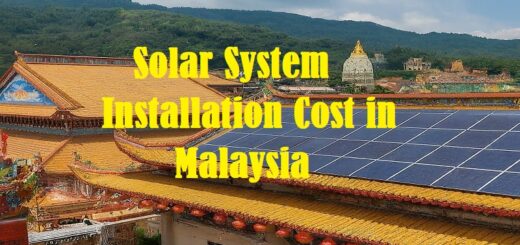


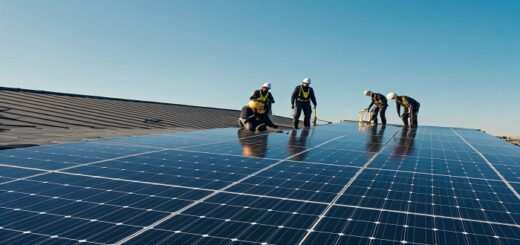
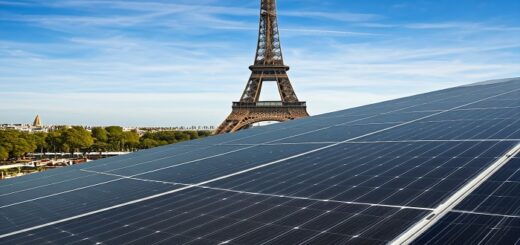



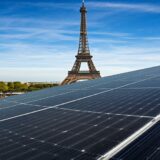
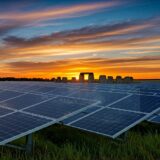





1 Response
[…] AC and DC solar systems are designed for extended lifespans. By choosing high-quality components, ensuring proper […]